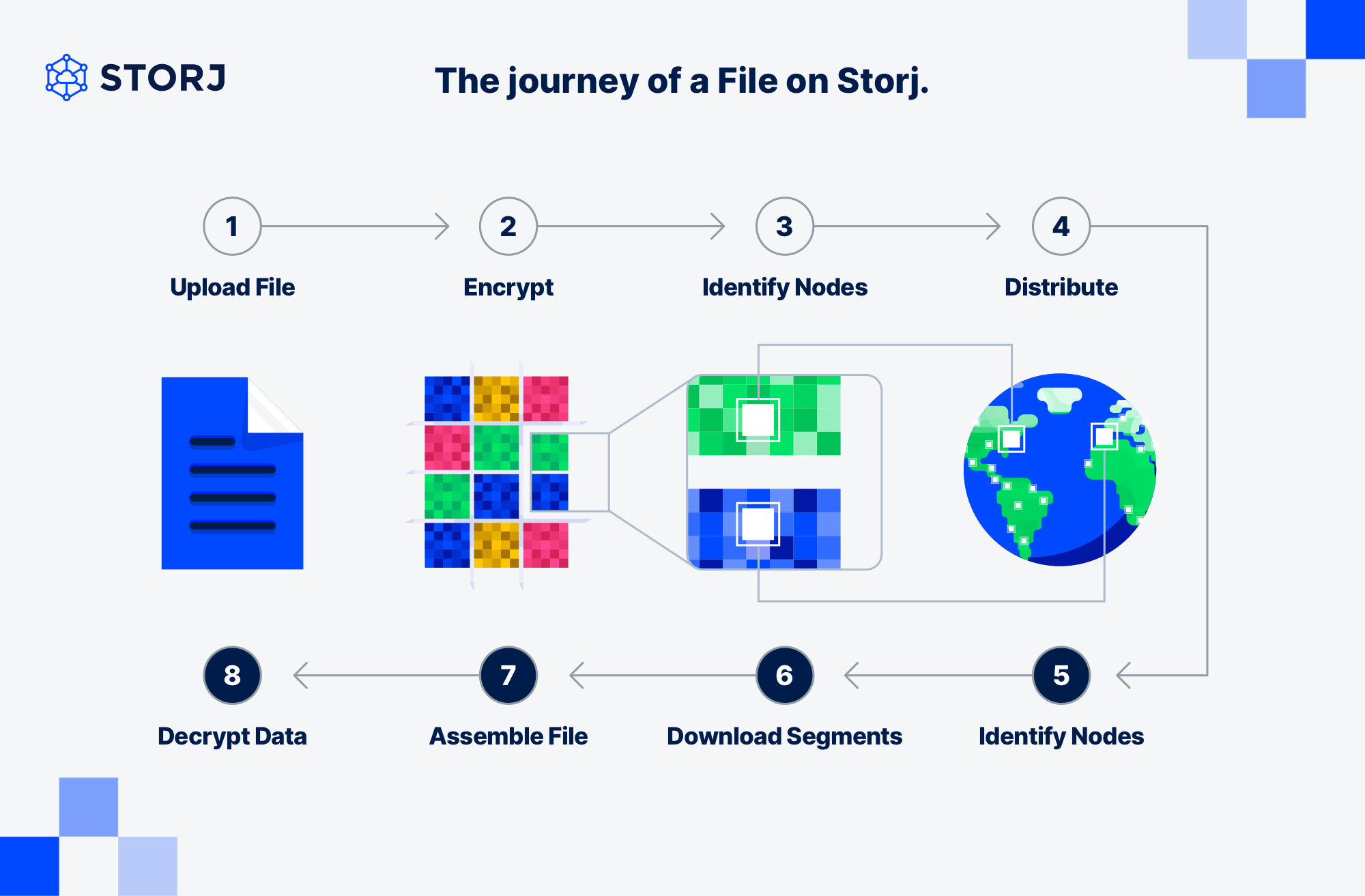Decentralized storage company Storj has launched a new version called Storj Next, which introduces new features and economic incentives to make this alternative to Amazon S3 more appealing on both sides of the equation.
Storj stores files safely, using extra storage capacity around the world. As TechCrunch’s Ron Miller explained in 2020, “they are effectively doing with storage what Airbnb does with an extra bedroom, enabling people and organizations to sell that excess capacity to make extra money.”
But unlike Airbnb, which isn’t always the cheapest option, Storj is typically less expensive than traditional cloud object storage, which is the option to store unstructured data, such as photos and videos, in the cloud. According to Storj, its solution costs just a fraction of the price of large cloud service providers. But would businesses be willing to take the privacy and security risk to store their files anywhere?
Storj doesn’t just plop all your files onto someone else’s computer. Instead, the encrypted files are broken up and split securely across the drives of the 20,000 individuals and companies renting out spare storage space, the company’s CEO, Ben Golub, told TechCrunch.
“Any piece of data that gets stored with us — any file, video, photo, medical record, what have you — is encrypted first before it comes to our network. So it gets scrambled up with keys that only the customer has […] and then it gets broken up into 80 pieces, of which any 29 [can] put it back together. And then each of those 80 pieces goes to a different drive in a different part of the world run by a different person on a different power supply.”

Image Credits: Storj
This allows Storj to offer cloud object storage that is not only secure and fast, but also more affordable than what Amazon, Google and Microsoft’s data centers offer.
Monetizing underutilized storage
As part of Storj Next, the company wants to help others monetize their unused storage in new ways.
The company will add an optional deposit structure in which network participants can get rewarded for depositing STORJ, the Ethereum-based fungible token used across the Storj network.
“We’ve also added a new capability for people in the community to do what is called running satellites; and not real satellites, but basically an opportunity for people who want to replicate what we’re doing as a business elsewhere in the world,” Golub said. “We’re making strides to make that possible, either for profit or not for profit, and we call those community satellites.”
Monetization aside, Storj Next also adds a new crypto-enabled feature: perpetual storage, which will be achieved via Ethereum smart contract payments with STORJ. “This is something that the web3 community was particularly interested in,” Golub said.
Storj has been doing open development since 2021, taking feedback and contributions from users — and the web3 community is undoubtedly active. However, it would be wrong to assume that Storj only appeals to decentralization aficionados.
A bridge between Web 2.0 and web3
“Our customers tend to be people who generate a lot of data and want to share [it],” said Golub, who previously was the CEO of Docker. Fast sync for blockchain is one of the use cases for Storj, but the company is also seeing demand related to video and media distribution, IT backup and disaster recovery, and sharing large data sets for machine learning.
Storj is S3-compatible, and onboarding is straightforward, Golub said. “If you’ve got an existing application that’s running in one of the large clouds or even on-premise, you change three lines and suddenly you can be storing your data [via Storj],” he said. “We make it super simple; the only thing that changes is that suddenly, your cloud bill goes from what it is now to having one fewer zeroes at the end, which people tend to like.”
While Storj’s latest features cater to the web3 community, the vast majority of its users are Web 2.0 companies, with Storj acting as a bridge between the two.
Storj CMO Rosie Pongracz said she thinks that this focus differentiates it from other players in the decentralized storage space, such as Internxt, Filecoin and Sia, which might be more focused on web3. “But the storage market is huge, and there’s lots of different use cases,” Golub said.
Correction: This story was updated to better reflect the alternative deposit structure that Storj will offer.
